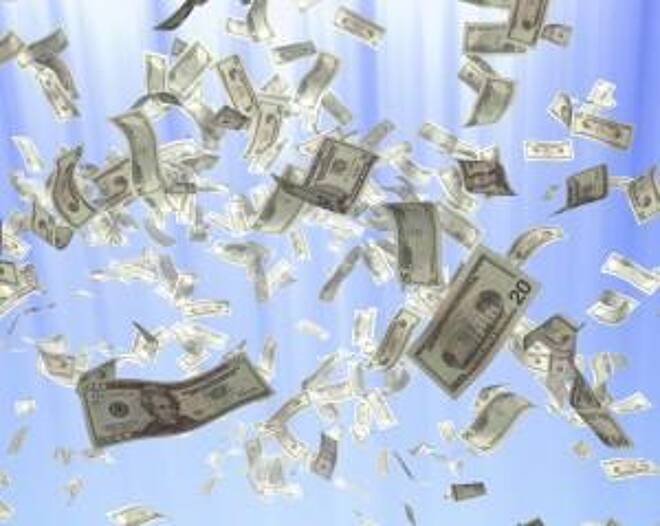Advertisement
Advertisement
EUR/USD in 2015 and Possible Lows and Highs in 2016
Updated: Nov 4, 2015, 11:51 GMT+00:00
This article begins by explaining the behavior of EUR/USD currency pair over the last 2 years and then lists possible market moves for the upcoming year
This article begins by explaining the behavior of EUR/USD currency pair over the last 2 years and then lists possible market moves for the upcoming year and their probability of occurrence.
The past
While the first half of the year 2014 showed us the lowest possible volatility on EUR/USD, the most traded currency pair worldwide, a downward slope has begun in early May. The main cause of this move was an unforeseeable cut of the refinancing rate by European Central Bank. Most of the analysts have predicted the September’s rate of 1.3000 to be the lowest possible, yet it was just a beginning of a new era.
The value of the pair has dropped from 1.3876 to roughly 1.2000 by the end of 2014. Was this the rate ECB expected and wanted to have at that moment? I doubt that. Even though ECB was strongly aiming for a depreciated euro, the growing US economy has certainly come surprising for the whole Forex market.
Nevertheless, the downward movement continued in the first quarter of 2015.
In early March 2015 EUR/USD has hit 1.0480, rate that has been seen last time exactly 12 years ago. This has been mainly the impact of the unexpected move from the Swiss National Bank and notorious results of the Greek elections in January 2015. Next to this, while Greece was certainly putting euro in a bad light, many analysts predicted the same case to happen in other EU member states: Ireland, Spain, Portugal and Italy.
Saving countries comes at a cost, and this is certainly why ECB launched Quantitative Easing (QE) program that commenced in early March 2015 and accounted for 1 trillion euro. This is an important factor to keep in mind, as the impact of it will expire only in September 2016.
The present
Second and third quarters of 2015 have been rather calm. The rate was going up and down, from as low as 1.06 to rarely breaking the level of 1.14. Even though this could seem as a quite serious volatility back in 2014, such moves are rather balancing compared to what we used to see just a few months ago. What does it mean?
In general terms, such moves should indicate the lack of confidence in both of the currencies and in the geopolitical situation as a whole. The upcoming US elections are also making the largest market makers to be quite reluctant towards making any bids on one of the currencies at this point in time. Hence, the current volatility is rather transactional than speculative.
The future
Currently it is possible to see three main logical ideas about the upcoming rates of EUR/USD in 2016. Let’s examine each of them and try to estimate the probability of the occurrence.
Euro Dollar parity
Quite a few analysts predict that eventually EUR/USD rate would be equal to 1 or to a value that is quite close to it, located between 1.05 and 0.95. Such a rate could be a result of the possible differences between the real and the expected inflation rates in both US and EU. Even considering the ongoing Quantitative Easing program in EU, the inflation rate is still not expected to get close to the ECB desired level of 2%.
I would estimate the probability of this prediction as the one that is quite likely to happen, unless there will be certain force majeure events in the US economy.
Euro Dollar @ 1.2
While there were certainly quite a few analysts that predicted a quick comeback of euro back to 1.2 in June 2015, the amount of such predictions has definitely decreased over the course of last few months. This can also be felt by seeing almost no impact from the latest ECB release that states a possible increase in the inflation rates within next three months.
The main conclusion can be drawn once the data about the upcoming QE is released on the 3rd of December 2015. Yet many economists suggest that it is hardly possible to have more impact with quantitative easing.
This brings us to a clue that any move of EUR/USD to a rate close to 1.2 is quite unlikely, although the December’s release should definitely shed more light on it.
Fluctuation between 1.05 and 1.15
To me the situation seems that ECB will be pushing towards the inflation to 2% and even though the probability of this is low, such an attitude can, and probably will, have some impact. We should not also forget that the current QE program is already included in the exchange rate while the updates in it will certainly contribute towards further development.
Forecasting the lows, highs and averages for 2016 I would conclude the lowest rate to be at the parity, while the highest possible rate is unlikely to break 1.15. However, considering the efforts of ECB, I would be looking into the average rate to fluctuate around 1.12.
This article was provided by Alpari’s top analyst. For more information please visit alpari.com
About the Author
FX Empire editorial team consists of professional analysts with a combined experience of over 45 years in the financial markets, spanning various fields including the equity, forex, commodities, futures and cryptocurrencies markets.
Latest news and analysis
Advertisement
